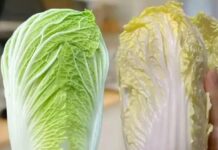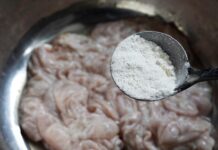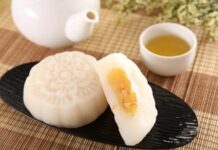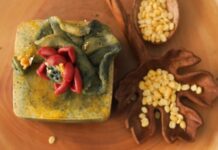
The unique appeal of roasted young rice cakes lies in their filling. The main ingredient is fresh young rice—a signature delicacy of Hanoi during the autumn season—carefully selected, cleaned, and simmered with grated coconut. This combination creates a soft, chewy filling that is both rich and retains the fresh, subtle aroma of young rice.
Unlike many other mooncake fillings that can be overly sweet, the young rice filling offers a harmonious balance: chewy, fragrant, and rich without being cloying. The sweetness is mild, complemented by the faint scent of pandan leaves and the freshness of young rice, creating an elegant and refined taste. Some describe it as “buttery and chewy like dairy but with a hint of rural charm,” offering a distinctly Asian experience. Enjoying it leaves one feeling refreshed, like walking through a garden after rain.
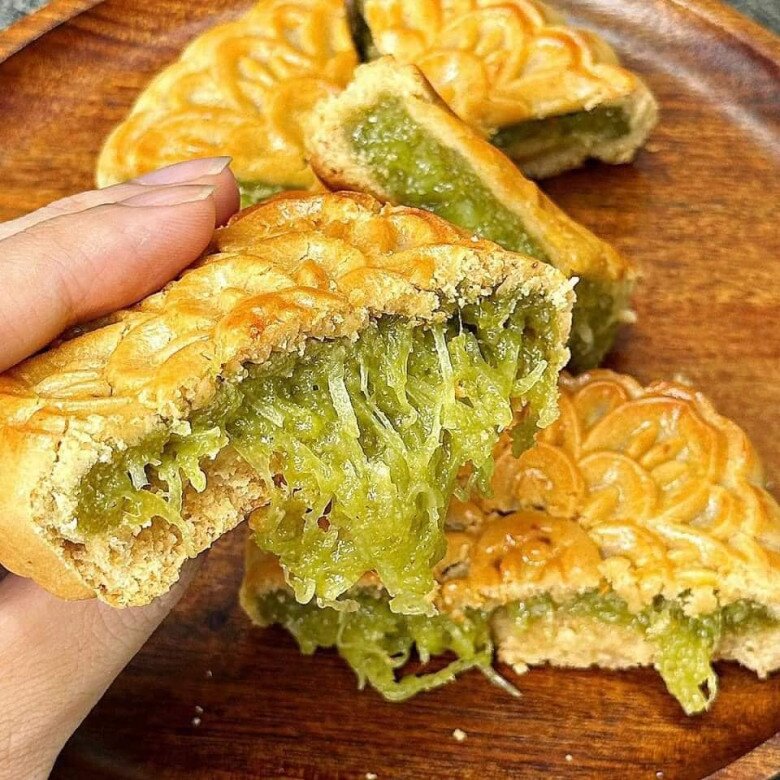
Crafting the perfect young rice filling requires meticulous attention to detail, from ingredient selection to preparation. The basic recipe includes: fresh young rice, long-strand grated coconut, sugar, coconut milk, pandan leaf water (blended from 15g fresh pandan leaves and 150g water, then strained), cooking oil, glutinous rice flour, and optional pandan essence for color.
First, the grated coconut is marinated in sugar for 30 minutes until softened. All ingredients (except glutinous rice flour) are mixed, rested for 15 minutes, then stir-fried over medium heat. Once the mixture becomes soft and cohesive, it’s removed from the heat, cooled, and combined with small portions of glutinous rice flour. The finished filling is wrapped, chilled for 2 hours, and then ready for use.
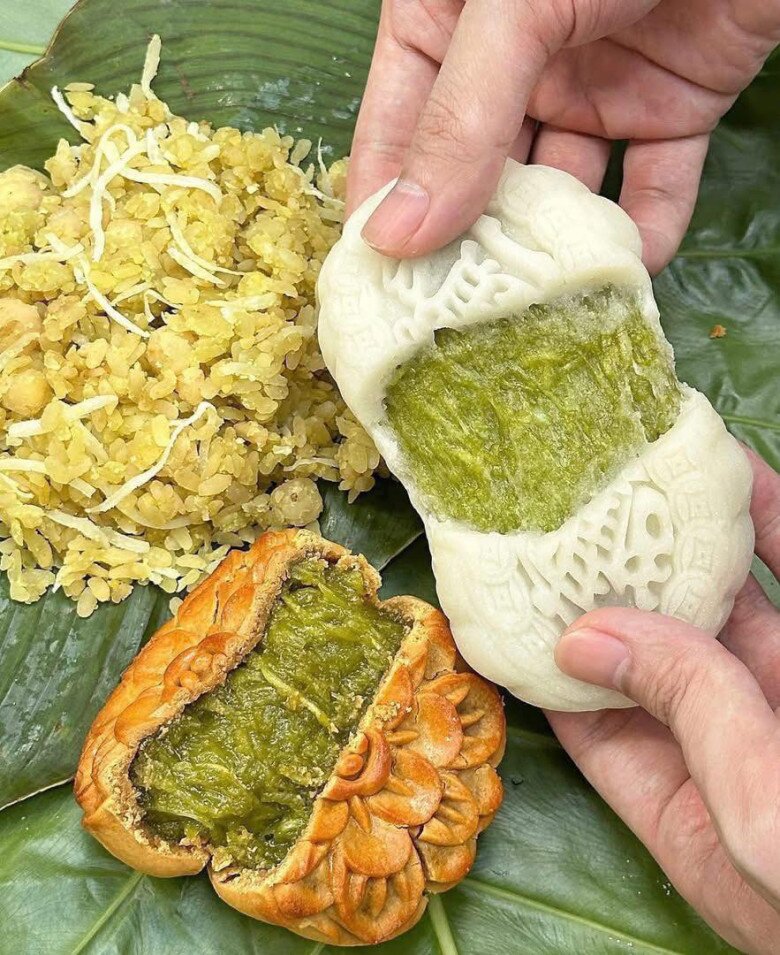
In shaping the cakes, the filling-to-crust ratio is crucial. For young rice cakes, a 1:1 ratio ensures balance and stability. For instance, a 150g cake typically contains 80g filling and 70g crust. The crust is made from 240g all-purpose flour, 160g sugar syrup, one egg yolk, and 30g cooking oil. Before baking, the surface is brushed with a mixture of egg yolk, unsweetened milk, and oil for a golden finish.
Many note that roasted young rice cakes offer a unique experience compared to traditional fillings like mixed nuts, mung bean, or lotus seed. The filling is exceptionally soft, sometimes causing the cake to lose its perfect shape. However, this “imperfection” becomes its charm for those who cherish the natural flavor of young rice.
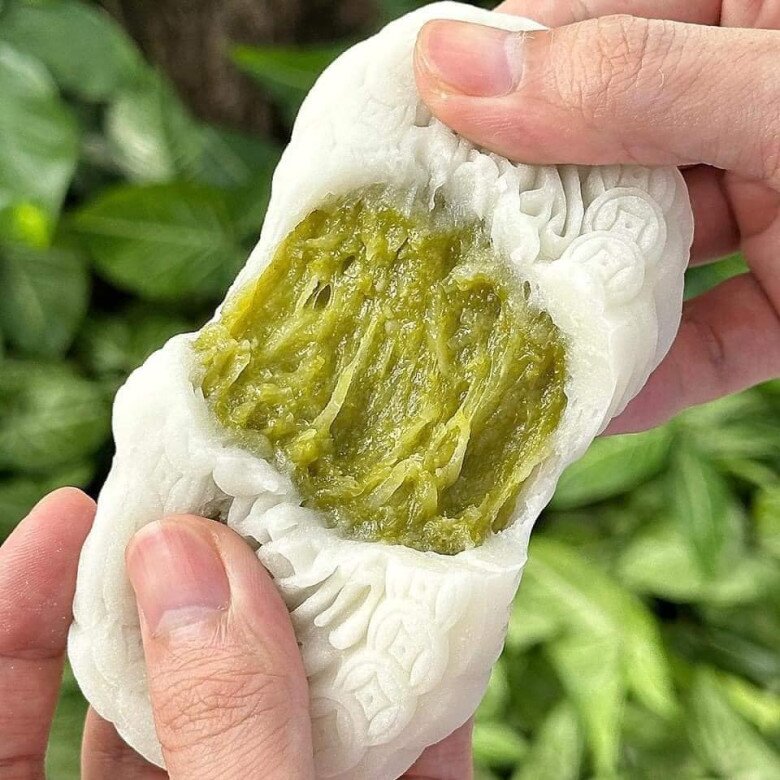
Some enthusiasts call this their “true love” for Mid-Autumn Festival, especially those fond of Hanoi’s young rice. The chewy filling, paired with the texture of coconut, offers a refreshingly sweet experience. Though the softness of the filling may compromise the cake’s shape, its flavor wins over even the most discerning palates.
Beyond roasted cakes, the young rice filling is also used in glutinous rice cakes, offering a fresh twist that caters to diverse tastes.
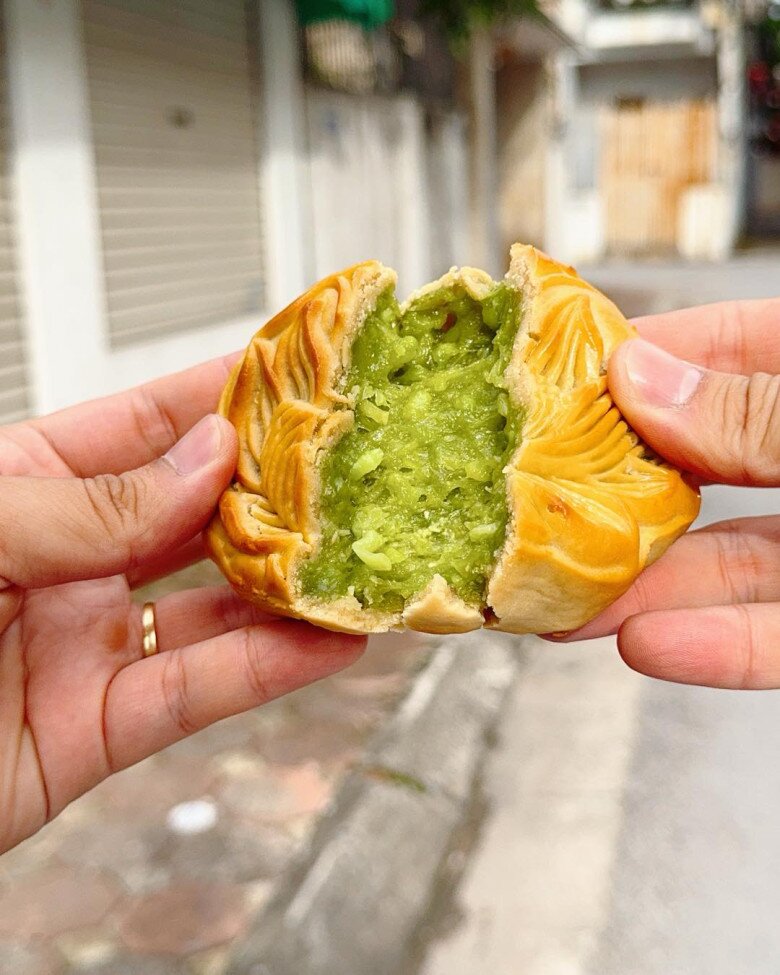
Widely available on social media, online shops, and bakeries in Hanoi and Ho Chi Minh City, these cakes range from 70,000 to 90,000 VND each, depending on size and ingredients. Compared to premium mooncakes, this price is reasonable, making it accessible to many.
Online sales have broadened its reach, especially among young people eager to try new trends. Photos of these pale green, glossy cakes flood culinary forums, garnering thousands of comments and shares.
The appeal of roasted young rice cakes is deeply tied to Hanoi’s young rice—a culinary treasure of the capital. Young rice symbolizes autumn and evokes memories of traditional villages like Vong. Innovating mooncakes with young rice not only boosts commerce but also enriches Vietnamese culinary culture.
Thus, roasted young rice cakes are more than a trend; they’ve carved out a special place in consumers’ hearts. Each cake blends tradition and innovation, preserving the essence of Hanoi’s young rice while appealing to modern tastes.
Over three Mid-Autumn seasons since 2022, these cakes have maintained their popularity, proving their enduring appeal. With their rich, elegant filling, they evoke the essence of Hanoi’s autumn. Merging tradition with creativity, roasted young rice cakes have become a new symbol of the Mid-Autumn Festival.
Today, they’re easily found online, priced between 70,000 and 90,000 VND each. Their sustained popularity underscores their lasting impact. This year, they once again shine as a culinary star in Vietnam’s Mid-Autumn celebrations.












